Purina Supercoat Adult Chicken Dry Dog Food 18 Kg
$56.69 (as of December 14, 2025 16:18 GMT +00:00 - More infoProduct prices and availability are accurate as of the date/time indicated and are subject to change. Any price and availability information displayed on [relevant Amazon Site(s), as applicable] at the time of purchase will apply to the purchase of this product.)Have you ever come across a puppy with the most mesmerizing blue eyes? They are so rare, yet so beautiful. And the best part is, these little furballs have some really interesting stories behind their unique eye color. In this article, we’ll take a friendly journey together and explore seven fun facts about puppies born with blue eyes. So sit back, relax, and let’s dive into the wonderful world of blue-eyed pups!

Are puppies born with blue eyes?
Puppies’ blue eyes are a result of their still-developing iris and retina. As these important parts of their eyes mature, their true eye color will emerge. It’s a fascinating process that can result in blue, green, hazel, or brown eyes. Keep in mind that this transformation usually happens between 8 to 12 weeks of age. So, if you want to witness the magic of a puppy’s eye color change, be sure to pay close attention during this time.
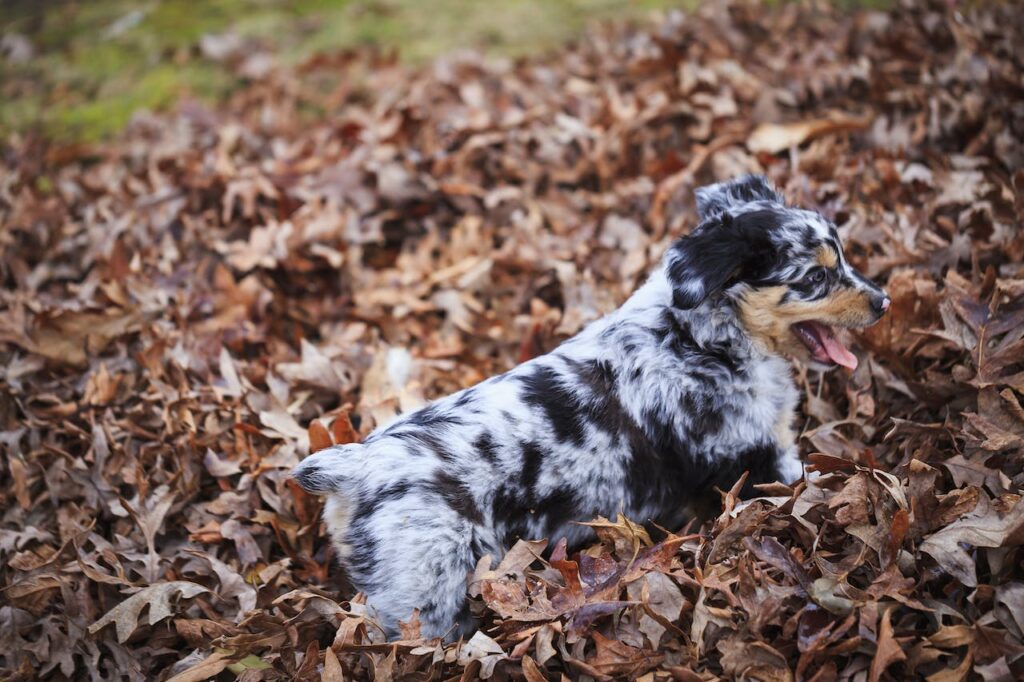
Why do some puppies have blue eyes that change color?
Some puppies are born with blue eyes which is due to the absence of melanin, the pigment responsible for eye color. As the puppies grow older, their melanin production increases which leads to a change in eye color. The amount of melanin produced determines your puppy’s final eye color.
7 Fascinating Facts About Puppies with Blue Eyes
Genetic Marvels
Did you know that blue eyes are not very common in dogs? Only about 5% of dogs have the blue-eye variant as part of their DNA, according to Embark Veterinary – a company that analyzes dog DNA. This means that most dogs have brown eyes, which are the default color for dogs. Blue eyes in dogs are a result of a genetic mutation that affects the pigment in the iris – the colored part of the eye.
What causes blue eyes in puppies?
Did you know that blue eyes in dogs are caused by a unique lack of pigment in their iris? The pigment responsible for eye color is called melanin, and it not only provides color to the eyes but also protects them from harmful UV rays and helps with vision too. But when it comes to blue-eyed dogs, they have less melanin in their iris, which makes them reflect light differently than those with brown eyes. Blue eyes appear blue because they scatter more blue light, while brown eyes absorb more light, making them appear darker. Isn’t that cool?

Breeds of Blue
Did you know that there are some dog breeds out there that have a higher chance of having mesmerizing blue eyes? It’s true! And what’s even more fascinating is that these blue-eyed breeds can have those striking peepers regardless of their coat color. So, if you’re looking for a furry friend with some serious eye-catching appeal, you might want to check out some of these amazing breeds that naturally come with beautiful blue eyes:
Zenify Pets Puppy Dog Toy Interactive Food Puzzle Treat Ball (Multi Pack Large)
$29.95 (as of December 14, 2025 16:18 GMT +00:00 – More infoProduct prices and availability are accurate as of the date/time indicated and are subject to change. Any price and availability information displayed on [relevant Amazon Site(s), as applicable] at the time of purchase will apply to the purchase of this product.)Siberian husky
These furry dogs are famous for their striking blue eyes, which contrast with their thick fur. They are originally from Siberia, where they were used as sled dogs.
Border collie
These intelligent and energetic dogs are often used as herding dogs. They can have blue eyes, brown eyes, or one of each.
Australian Shepherd
These versatile and faithful dogs are not actually from Australia but from the United States. They are also used as herding dogs and can have blue eyes, brown eyes, green eyes, or amber eyes.
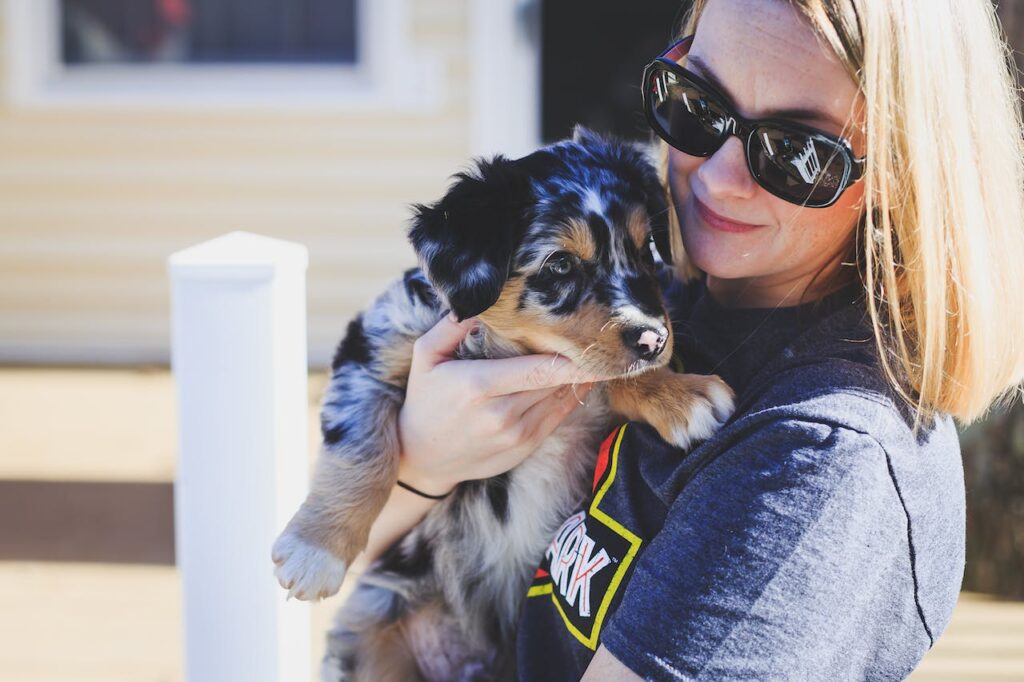
Dachshund
These short-legged and long-bodied dogs are also known as wiener dogs because they resemble sausages. They can have blue eyes, brown eyes, or one of each, and they come in many colors and patterns. Read more about Dachshunds with 10 Astonishing Things You Didn’t Know About Dachshunds!
Weimaraner
These athletic and elegant dogs have a silvery-gray coat and eyes. They can have blue eyes as puppies, but they usually change to gray or amber as they grow up.
Cardigan Welsh Corgi
These cute and friendly dogs are cousins of the Pembroke Welsh corgi, which is the preferred breed of Queen Elizabeth II. They have longer tails and larger ears than the Pembroke and can have blue eyes, brown eyes, or one of each. Find out the answer to Are Corgis the Ultimate High-Energy and Active Dog Breed?

Great Dane
These gentle and gigantic dogs are also known as gentle giants because they are very sweet and affectionate. They can have blue eyes, brown eyes, or one of each, and they come in many colors and patterns.
Catahoula leopard dog
These powerful and unique dogs are the state dog of Louisiana, where they were bred to hunt wild boars. They have a distinctive coat that resembles a leopard, and they can have blue eyes, brown eyes, green eyes, or amber eyes.
Alaskan Klee Kai
These cute and small dogs are miniature versions of the Siberian husky. They have the same fluffy fur and blue eyes, but they are much smaller and easier to handle.
Merle and Piebald Genes Can Give Your Dog Blue Eyes
Did you know that some dogs have beautiful blue eyes not because of their breed, but because of their coat color? It’s true! And it’s all thanks to two genes that affect both their coat color and eye color: the merle gene and the piebald gene. These genes create patches of different colors on their coats and can even impact the pigment in their eyes, resulting in gorgeous shades of blue or even heterochromia (two different colored eyes).
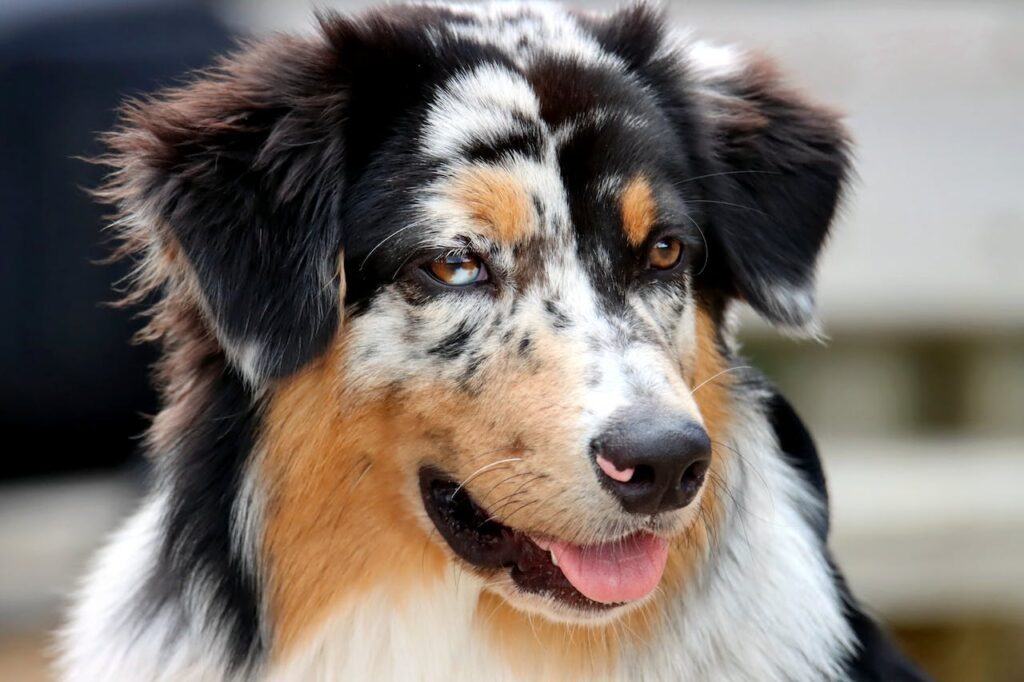
If you’re curious about which breeds can have these stunning blue eyes, let me tell you about some of them:
- First up, we have the Shetland Sheepdog, also known as Shelties. These small and fluffy dogs are related to the Border Collie and can sport blue eyes, brown eyes, or even one of each! They mostly have a merle coat, which accentuates their beautiful eyes.
- Next on the list, we have the Collie. These large and fluffy dogs can have blue eyes, brown eyes, or one of each, and they too can sport a merle coat. Who wouldn’t want to gaze into those big, blue eyes?
- Moving on to the Pomeranian, also known as Poms, these tiny and fluffy dogs can have blue eyes, brown eyes, or one of each. They can also have a piebald coat, which makes for a striking contrast with their blue eyes.
- And let’s not forget about the Chihuahua, the smallest breed of dog! These small and feisty dogs are also known as Chi and can have blue eyes, brown eyes, or one of each, just like the other breeds we’ve mentioned. They can also have a piebald coat, which gives them a unique look.
- Finally, we have the Beagle. These medium-sized and friendly dogs usually sport a piebald coat and can have blue eyes, brown eyes, or one of each. Their charming personalities and beautiful eyes make them a popular choice for families.
So, there you have it – some of the many breeds of dogs that can have blue eyes thanks to their coat color and those fascinating genes.
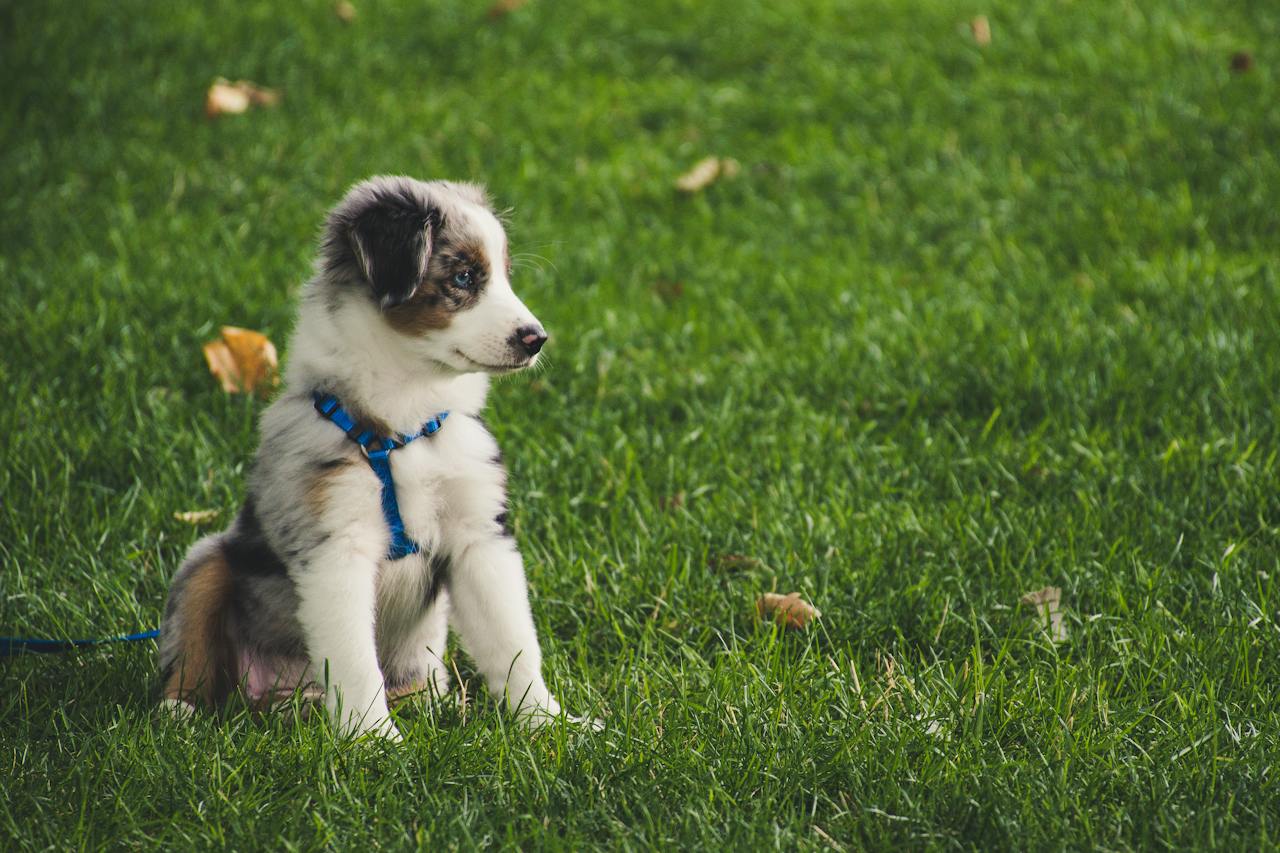
Mix and Match: Your Puppy Can Have Two Different Colored Eyes
Did you know that some dogs have different colored eyes? This condition is called heterochromia. It can occur in any breed of dog and can be caused by different factors. One factor is the merle or piebald gene, which can affect the pigment in the eyes. Another factor is the ALX4 gene, a rare mutation that causes blue eyes regardless of the coat color. Heterochromia can manifest as one blue and one brown eye, or two different shades of blue.
Farmer’s Market Beef and Farm Vegetables Adult Dry Dog Food 6.8kg – Made with Real Australian Meat & Vegetables for Complete Nutrition, Supports Muscle, Skin & Coat Health
$20.00 (as of December 14, 2025 16:18 GMT +00:00 – More infoProduct prices and availability are accurate as of the date/time indicated and are subject to change. Any price and availability information displayed on [relevant Amazon Site(s), as applicable] at the time of purchase will apply to the purchase of this product.)Some of the breeds that can have heterochromia are Siberian huskies, Border collies, Australian shepherds, Dachshunds, and Catahoula leopard dogs.
Hear Me Out: Why Blue-Eyed Dogs May Have Trouble Hearing
There are certain health concerns associated with those blue eyes that you might not be aware of. One of the most common health issues linked to blue eyes is deafness. Deafness can affect any breed of dog, but it is more prevalent in dogs with blue eyes, particularly if they have a merle or piebald gene.
Wondering why? The merle or piebald gene can also impact the development of the inner ear, which is responsible for hearing. The inner ear has cells that create pigment, and these cells are also important for the formation of the ear structures. If these cells are missing or defective, the ear structures can be malformed or absent, leading to hearing loss.

Let’s talk about some of the breeds that are more prone to deafness because of their beautiful blue eyes:
- Dalmatian: These spotted dogs are not only famous for their role in the movie 101 Dalmatians, but also for their blue eyes, brown eyes, or one of each, and their usually piebald coat. Sadly, they have a high incidence of deafness, affecting about 30% of the breed.
- Australian Shepherd: These loyal and versatile dogs can have blue eyes, brown eyes, green eyes, amber eyes, or any combination of these colors. And have you seen their unique merle coat? It’s stunning, but unfortunately, it also increases their risk of deafness.
- Catahoula leopard dog: These unique and powerful dogs can have blue eyes, brown eyes, green eyes, amber eyes, or any combination of these colors. They can also have a merle coat, which raises their chance of deafness.

Are dogs with blue eyes albino?
Did you know that blue-eyed dogs are often mistaken for being albino? But, the truth is far from it! While albinism is a genetic condition that affects the pigment production in the body, dogs with blue eyes still have some melanin in their system. The only difference is that they have less melanin in their iris, which gives them a captivating blue color.

Further Reading
- How to Safely Introduce Rice to Your Puppy’s Diet
- When Do Puppies Eyes Change Color? (From Blue to Permanent Color)
- What you need to know about dogs with blue eyes

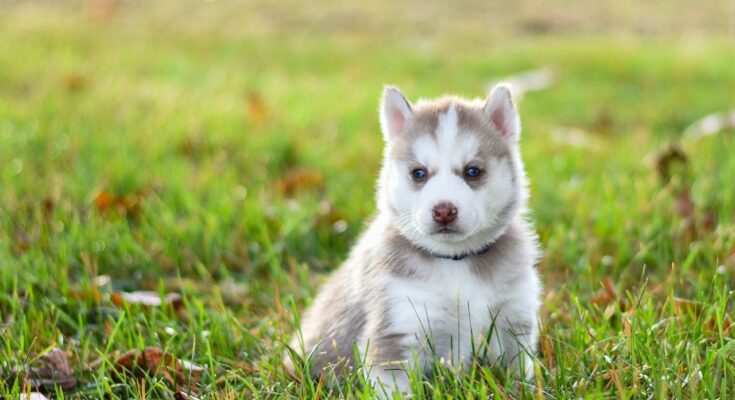







One Comment on “7 Fascinating Facts About Puppies Born with Blue Eyes”